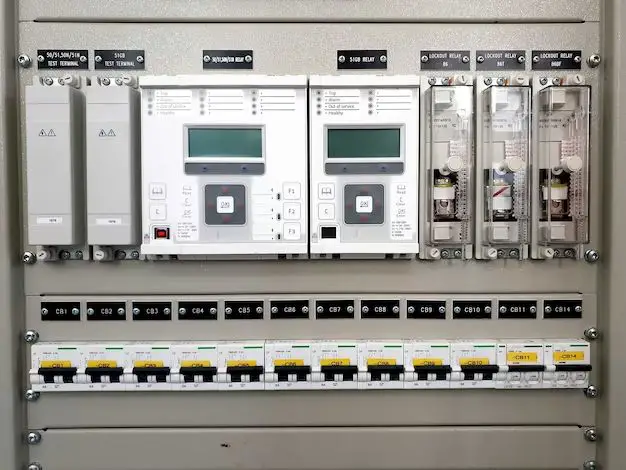Covering your breaker box is an important step in improving the appearance and safety of your electrical system. There are a few key considerations when deciding how to cover or conceal your breaker box.
Page Contents
Why Would I Want to Cover My Breaker Box?
There are a few main reasons homeowners choose to cover their breaker boxes:
- Aesthetics – Exposed breaker boxes can be an eyesore or clutter up the look of a room. Covering the box helps it blend in.
- Safety – Covering the breaker box prevents accidental contact with live wires and reduces tampering.
- Noise reduction – A cover dampens the hum or buzz from the electrical components.
- Added storage – Some covers integrate shelving or cabinets to take advantage of the unused space.
Depending on your goals, covering your breaker box can be an easy upgrade with significant benefits.
What Are My Options for Covering the Breaker Box?
There are a few common options for concealing your electrical panel:
Breaker Box Door
Many breaker boxes come with a door panel that covers the breakers. This door will match the rest of the box and is an inexpensive option if your unit didn’t come with one originally.
Breaker Box Cabinet
For a more seamless look, you can install a cabinet or enclosure around your breaker box. This completely hides the existing box behind wood panels or laminate finishes.
Wall-Mounted Panel
Wall-mounted or recessed breaker box covers fit flush to the wall surface, creating a seamless appearance. These covers can be painted or wallpapered to blend in.
Custom Box Cover
For a more unique solution, many homeowners have custom covers built. This allows complete control over the design, from materials to dimensions. Popular custom covers include:
- Shelving
- Cabinets
- Wainscoting
- Faux painting
- Wallpaper
Where Can the Breaker Box Be Located?
Before covering your breaker box, it’s important to ensure it’s located appropriately within your home. Per the National Electrical Code, the electrical panel should be:
- Readily accessible – It can’t be completely sealed behind drywall or other obstructions.
- Located at eye level – From 5 to 6.5 feet off the ground.
- Near the main service entrance – Usually close to where electrical wires enter the home.
- In a dry location – Not in damp areas like near sinks or water pipes.
- Not in a clothes closet or bathroom – Too difficult to access safely.
The panel must meet these requirements before adding any concealment or cover.
Do I Need a Permit to Cover the Breaker Box?
In most cases, you don’t need a permit to simply cover your existing breaker box. However, you should check with your local building department if you plan to:
- Move the breaker box to a new location.
- Replace the breaker box unit.
- Make any wiring changes or upgrades.
- Add any new circuits or service capacity.
Any electrical upgrades generally require proper permits and inspections. But just hiding the breaker box behind a simple cover is usually straightforward.
Step-by-Step Guide to Covering Your Breaker Box
Here is a step-by-step guide for installing a wall-mounted cover on your breaker box:
- Turn off the power. Flip the main breaker switch to fully deactivate the panel.
- Remove the dead front. Unscrew and take off the front panel covering the breakers.
- Check the area. Ensure there is enough clearance around the box to install the cover.
- Mount the backplate. Screw the rear cover plate into place over the box.
- Attach the sides. Secure the side panels into the backplate grooves.
- Install the front. Screw on the front frame piece to enclose the box.
- Finish the surface. Mud, tape, prime and paint the cover to blend with the wall.
- Reactivate the power. Flip the main breaker back on to restore electricity.
- Test operation. Switch some breakers on and off to ensure proper function.
With those simple steps, you can transform that outdated exposed panel into a flush wall-mounted cover. Always take proper safety precautions when working on electrical projects.
Removing the Breaker Box Cover
If you need to access the breakers after installing a cover, most designs allow for quick removal. Follow these tips:
- Locate the seams. Wall-mounted covers typically have removable panels or snap-on fronts.
- Power down the box before removing any components.
- Unscrew or unlatch the sides and front panel to expose the breaker box.
- To reattach, simply reverse the steps to reassemble the cover.
Custom covers like cabinets may require hinges or more extensive disassembly. But in general, your cover should allow occasional access without fully removing it.
Conclusion
Covering your breaker box provides an affordable upgrade to improve the functionality and appearance of any room. By using a wall-mounted cover, cabinet, or custom solution, you can seamlessly integrate your electrical panel into the decor. Just be sure to follow building codes and electrical best practices when installing any new cover.
